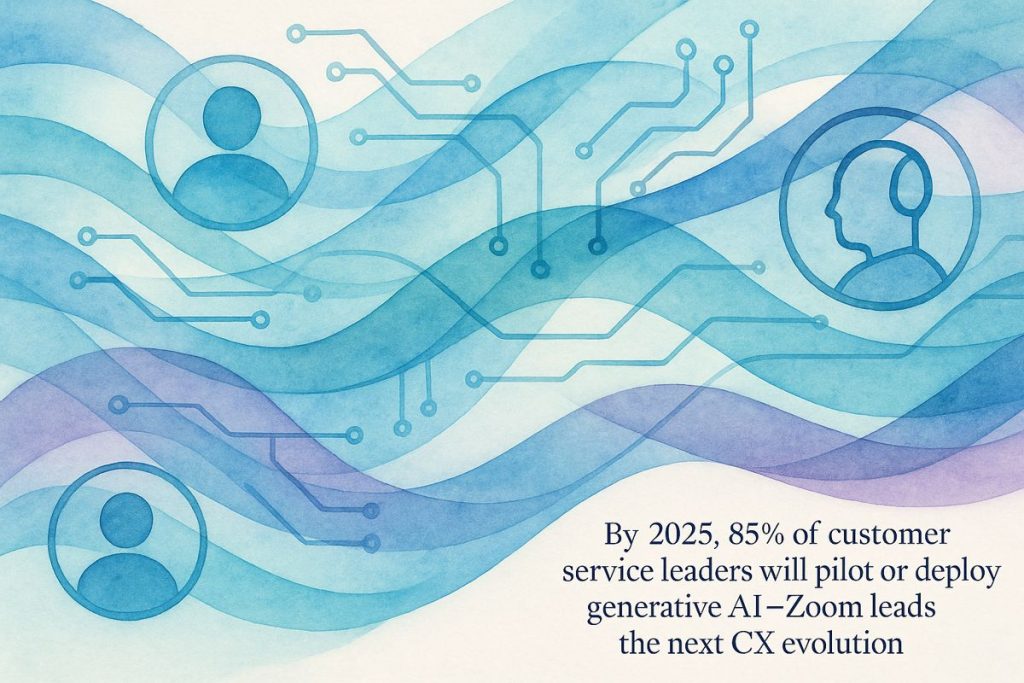Zoom’s agentic AI is like a smart, attentive helper for customer service centers. It remembers your past chats, solves problems on its own, and handles tasks like refunds or appointments without making you repeat yourself. With real-time smarts and the ability to switch between chat and calls, it makes getting help feel easy and personal. Thanks to Zoom’s AI, the old, boring customer service is now fast, friendly, and a little bit magical—almost like having a super agent who never gets tired.
What is Zoom’s agentic AI for contact centers and how does it improve customer experience?
Zoom’s agentic AI for contact centers is an advanced platform that autonomously manages multi-step customer journeys, remembers past interactions, and orchestrates tasks like refunds or appointment scheduling. By integrating contextual memory, nuanced reasoning, and real-time analytics, it streamlines workflows and delivers more efficient, personalized customer experiences.
Zoom’s Bold New Canvas
You know that faint fragrance of fresh espresso beans? That’s what I imagined as I first read about Zoom—yes, the same folks who powered roughly 300 million daily meeting participants in 2023—vaulting headlong into the customer experience (CX) fray. It’s not just a pivot; it’s a reconfiguration of their entire palimpsest. After all, who expected the video-conference juggernaut to moonlight as the architect of contact center revolution?
But here we are. In 2025, Zoom’s unveiling of agentic AI for contact centers is less a footnote and more a thesis statement. Their new agentic AI platform—think less “scripted robot,” more “digital Swiss Army knife”—claims to orchestrate seamless customer journeys with the flair of a seasoned maître d’. If you’ve ever been stuck in a labyrinthine IVR menu, you’ll appreciate that Zoom’s CX platform is now equipped to resolve full cases, marshal hyperspectral analytics in real time, and automate workflows with a dexterity that borders on eerie.
Sometimes I wonder—does anyone actually enjoy talking to a chatbot? But with what Zoom’s building, I had to stop and ask myself whether the answer might soon be “yes.”
Behind the Agentic Curtain
Let’s peel back a layer. Agentic AI isn’t your garden-variety chatbot, endlessly recycling “How may I help you?” Instead, it conjures up the cognitive agility of an improv troupe, guided by four pillars: autonomy, nuanced reasoning, contextual memory, and orchestration. (I admit—I once dismissed “orchestration” as just another Gartner buzzword. Mea culpa.)
Zoom’s agentic AI can string together multi-step customer journeys, remember your last run-in with billing, and—get this—proactively handle tasks like refunds or appointment scheduling. It’s as if your support agent suddenly developed a photographic memory and the ability to juggle five requests while sipping oolong tea. Oh, and all of this happens without breaking a sweat, or requiring you to repeat your life story to a new agent every time.
Case in point: Just last month, a friend griped about her package vanishing into FedEx’s ether. She spent 38 minutes bouncing between departments. Under Zoom’s approach, a virtual agent could’ve not only tracked her shipment but also cross-referenced order data in ServiceNow and issued an apology voucher (an “illustrative” example, but you see where I’m going).
Still, I felt a shiver of skepticism—can any machine really deliver that level of empathy? Then again, is it empathy we want, or just efficient, memorable resolution? A philosophical quandary, that.
The Finer (and Stranger) Details
Zoom’s foray isn’t a solo for violin but a full-on symphony. At the heart is the Zoom Virtual Agent, which now boasts agentic AI and handles chat and voice journeys, switching between them with the deftness of a chess grandmaster—a move reminiscent of OpenAI’s leaps with GPT-4 Turbo. Supervisors meanwhile are no longer left adrift; Zoom’s revamped real-time dashboards let them coach agents, flag KPIs, and jump in where needed, all before a minor hiccup snowballs into a CX debacle.
Customization? Enter the AI Studio, Zoom’s toolkit for enterprises to train, shape, and deploy their own agentic minions—each with workflows calibrated to the quirks and shibboleths of their particular brand. Zoom’s native integration with ServiceNow and Google Workspace means your AI agent can trigger cross-platform odysseys, from order escalations to automatic knowledge base updates. There’s a certain clickety-clack rhythm to it, like fingers skittering over a mechanical keyboard.
One tiny hitch—when everything is automated, who’s left to notice when something goes deliciously, delightfully awry? Perfection isn’t always the goal. Sometimes, a well-timed “hmm…” is worth more than robotic precision.
Zoom’s Agentic AI: Context, Competition, and Consequence
By 2025, industry prophets forecast that 85% of customer service leaders will have dipped their toes (or, frankly, cannonballed) into generative AI waters. The writing’s on the wall—or perhaps, more accurately, etched in the shifting zeitgeist of enterprise IT. Why? Because as agentic AI takes over the menial, human agents are liberated to tackle the gnarly, emotional, or unexpected—a division of labor that feels oddly humane.
Zoom’s federated approach, combining proprietary LLMs, third-party intelligence, and compact SLMs, offers flexibility, cost rationalization, and adaptability. It also keeps the compliance bureaucrats at bay (Zoom Blog: Next Evolution). UC Today and CX Today have weighed in, noting Zoom’s push toward empathetic AI—think agents that mirror customer mood, interpret intent across platforms, and scale on demand (UC Today; CX Today). The metaphor here: old-school chatbots as clunky flip-phones, Zoom’s agentic AI as the first iPhone—intuitive, multi-purpose, a little bit magical.
And yet, the
